Continued from Conceptual Art and Eastern Europe, Part I
Zdenka Badovinac: What you’ve mentioned leads me to the question of identity versus other international questions that were being explored around 1968. How much are we forcing this Eastern European identity? This question only occurred after the Soviet regime collapsed. Before the fall of the wall, in Russia or in other Eastern and Central European countries, did artists talk about this?
Piotr Piotrowski: They did not, but intellectuals did, particularly at the end of the 1970s and the beginning of the 1980s. At this time, among Central European intellectuals there emerged a sort of identity which was perceived as original, being simultaneously Central European and against the Soviet regime. Think of Kundera, for example, or Konrád in Hungary, or Michnik in Poland. Artists did not follow this attitude, these statements, but writers did. Among them there was this striking, strong desire to construct a Central European identity, which was not exactly a Western one.
ZB: What was at the center of this discussion?
PP: An anti-Soviet stance. That was central.
ZB: Writers were interested in these questions of Eastern or Central European identity, but I would say visual artists were more occupied with ideas and questions that circulated in international space.
PP: However, that was also a reaction: to be international was not to be local or suppressed by Soviet cultural policy. The reception of international art trends, stars, and art in general—the hidden dimension of which was not to be suppressed by Soviet propaganda or its cultural politics—was pivotal. We can only define this in a very complex way.
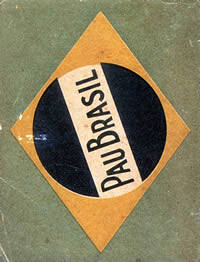

ZB: However, what Cristina said is interesting. Brazilian artists, at the time, were really talking about Brazilian identity.
Cristina Freire: In the 1920s and 1930s.
ZB: Were Hélio Oiticica and Lygia Clark also into these questions?
CF: Yes, they were bringing up some such questions, but through an existential approach. I don’t see this as the same thing necessarily. If until the 1930s and 1940s we could find this national identity represented in literature and visual arts, after the 1950s it was not so anymore.
PP: It was the same in the 1930s with Hungarian and Polish visual art. This is the wave seeking national identity, the second wave of modernism. The French sought this as well.
Boris Groys: Of course, in the 1970s Conceptual art was percieved as being anti-Soviet, and the whole independent art circle was perceived as practicing anti-Soviet propaganda. Not all artists realized this, though.
CF: I think we Brazilians didn’t share this stance of being against something, such as propaganda or the regime. On the other hand, we can find identities in Brazilian work of the time. It might not stricly be identity; more trying to connect what you’re doing with the context.
ZB: As I remember from the work of Hélio Oiticica and Lygia Clark, wasn’t it related in a certain way to the tradition of Tropicália?
CF: Yes, but I don’t think Oiticica was searching for a certain identity. When Oiticica particpated in the Information Exhibition, he wrote in the catalogue, on the page alloted to him: “I’m not representing Brazil.” He was not trying to represent Brazil, just doing his work. And in the 1970s, in the worst period of the dictatorship, he wasn’t even living in the country, but in New York. Of course all his work and everything he was related to his origin. In this case, I don’t think we can apply Western conceptualism, like in the case of the philosophy of language, to the context. It doesn’t make sense. It’s hard to find references. When you mention Tropicália, of course, the movement is related to Oiticica’s environment, the architecture of favelas, music. Everything is connected to it.
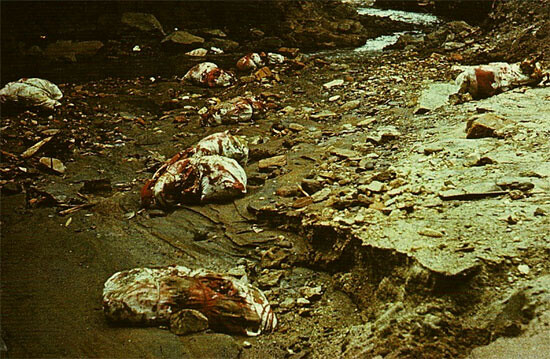

Charles Harrison: It seems to me that almost always in Latin America, art has a strong sense of location. Not nationality, but location.
CF: Location—that’s it! For instance, Artur Barrio doesn’t make works, he constructs “situations”; there’s this idea of the city, of place.
ZB: Cristina, Boris, you have written about participation and collectivism. How did Conceptual artists work in groups? And how did they address people as participants and not just as viewers?
CH: I think the point Boris made about subjectivism is quite important. Collaboration in Conceptual art is a critique of subjectivism. It is an attempt to oppose the traditional stereotypes of artistic personality and individualism, and to prioritize the idea of content, intellectual content, autonomy, in the sense of what is produced, and how it suppresses individualism, personality, and subjectivism.
ZB: Boris also wrote about Russian or Eastern European collectivism in another way: there was a sense of collectivism which was, as I understood it, not just belonging to one artistic group, but to collective ideas among artists in general.
BG: I believe it’s a similar situation to Brazil. In Russia, the Collective Actions Group had absolutely the same goals regarding ideas of authenticity and subjectivity, and above all, sought to erase this divide between artist and viewer. Collective Actions activities consisted of doing almost nothing and asking other people to react to this. All the “Appearances” lasted a few minutes or even seconds. Collective Actions Group invited people, performers appeared; however, the spectators almost couldn’t react because it was too fast, and then it took half a year or a year to discuss that. And then they made a volume based on these discussions. Things like this were very much at the center of Moscow activities in the 1970s. I’ve written about fictional collectivities too, like those imagined by Kabakov, who invented them, as he invented fictional artists, presenting himself as a curator who accidentally finds this or that group of artists (ten people in one apartment, twelve people in another) and presents their work from the neutral perspective of an art historian. These collectivities compensate for the lack of real collective practices. There were different approaches and practices, but of course the whole goal was to mark the difference between “authentic” subjectivity and this kind of group activity. At the same time, this practice always reflected mechanisms of propaganda. For example, Kabakov made propaganda for his fictional artists, and the Collective Actions Group spread leaflets, wrote letters to people, announced their actions, praised themselves, and so on. It was a certain type of imitation of propaganda practices.
Eda Čufer: I think collectivism also had a functional dimension, creating a circle where you could build a parallel society that prevented you from being instrumental as an individual. However, I believe that in the case of Art & Language, it was consciously done vis-à-vis society, capitalist society, its institutions.
BG: It was a utopian collectivity at that time. And it collapsed. Art & Language also had to build a kind of local group utopia too, although in Russia that happened in the 1960s and 1970s.
EČ: Concerning Collective Actions, I didn’t hear mentioned here their desire to mirror the West. Collective Actions created, through their activities, an underground institution that led them to the idea of the seminar and the archive, although they were not officially delegated by state institutions to produce that discourse, which was supposed to be a function of society at large. We still have a lack of notions and terms, which we borrow from Western discourse because of this. This lack of knowledge production would in other instances be integrated into society.
BG: I agree. I argued something similar in my text about Russian conceptualism. The problem is that if you invent something to differentiate yourself from the West, you create the illusion of being exotic. As it is, there is something there which is Western, as there is something here in Moscow specifically Russian. As such, it is a move towards self-exoticizing, which is perhaps a good selling practice, one of the best selling practices in art—particularly in our time, where everybody looks for difference. However, I think it’s a bad intellectual practice because, in fact, what is interesting about Moscow Conceptualism is its similarities with Western conceptualism. Not the fact that it is different, but the fact that it is similar. Only at the moment you realize this similarity, difference becomes also interesting. If you don’t see the similarity, your intellectual claim is reduced, because then Moscow Conceptualism becomes simply exotic and a commodity coming from Moscow. In my text “Moscow Romantic Conceptualism,” I tried to create a kind of tension. It is like people say Russian communism wasn’t a true communism. But it was communism, nonetheless—if it wasn’t, nobody would be interested in arguing whether it was true communism or not.
EČ: You mentioned in the beginning of this conversation that Russia is not in, that there’s no motivation to write PhDs on these themes, and so on. That doesn’t happen with Western conceptualism. It is still very motivating to produce PhDs on the same subject a hundred times. We still don’t have it reflected. We don’t have names or explanations for it. There are a lot of gaps.
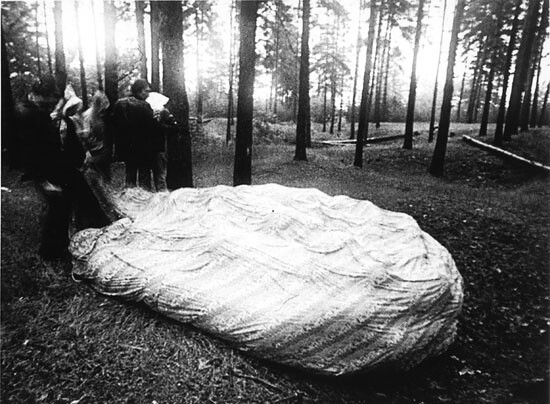

BG: I said Russia was not fashionable, but conceptualism is fashionable, and so is Russian conceptualism. I had a course on that at New York University, which attracted a lot of people. They were looking into the notion, because it’s somehow also a brand. They were looking for something that is conceptual but not very well-known because it provides a perspective of discovery. The same occurs with the Russian avant-garde, which is also an invention of the West. Nobody in Russia has ever called it avant-garde. They’ve called it futurism or whatever. The Russian avant-garde is something of a brand—and it was created later than it was produced. It makes no difference if Russians produced conceptualism simultaneously with other movements. Conceptualism is a relatively intelligent branding, that allows us to consider certain practices that are comparable to what happened in the West as also being conceptualist ones—this ability to be comparable to a brand is a part of the brand as such, a way of being integrated in the relevant discourse. And there is an academic interest in that. People who are not interested in Russia could be interested, for example, in narrative practices of Russian conceptualism.
Vít Havránek: An important point in Sol LeWitt’s text “Paragraphs on Conceptual Art” is its very accurate articulation and dialectics—a dialectics between an individual or a group and an idea. The idea question is a crucial one. Of course historically and philosophically, there are different strategies for how to imagine an idea: in terms of linguistic philosophy, in which case it’s a language-idea; then again, it can be an image. From this point we can see that there are different ideologies, methodologies, and philosophical approaches embedded in this very first definition of Conceptual art. From here I would go more concretely into this dialectics of the “idea” as this rupture with modernity or, likewise, the so-called formal language of the 1950s. I think it would be interesting to speak concretely of artists such as Julius Koller, who refers a lot to the Dada movement. I think we should discuss quite carefully this moment to see the relationship with the notion of the idea as a dialectic and dynamic situation. There are very precise historical definitions of this, but we shouldn’t exclude seeing the whole complex as a dynamic one, or limit it to a single definition of what an idea of the art process could or should be. This is a problem if you are looking at the past retrospectively. In this sense, applying Sol LeWitt’s idea in retrospect—a lot of work fits his definition. What happens to the cases of Manzoni, Yves Klein, or even Duchamp? If you consider this idea, and its relation to the individual as a type of dialectics, then this dialectics has the potential to be seen in retrospect all the way back to its emergence.
CH: That’s actually a very good point. One of the things that happened in 1967—I feel its almost that specific—is that once the central status of that modernist account of the history of aesthetics is put into question, a whole lot of practices, previously part of history albeit slightly invisible, become very visible again. Duchamp, Manzoni, Yves Klein become visible, as does early Morris. Then, people in the West start looking outside the mainstream, they start looking at Latin America, to the East, and everything opens up very fast. As if what history signifies becomes much messier and wider again, and the mainstream, basically controlled from New York, disappears. When you lose the mainstream you lose all your regulations, the sense of standards, paradigms—and you lose the concept of art. Perhaps that loss is a good thing. A lot is put into question which is already questioned elsewhere, and then it becomes part of the larger discourse.
CF: If you look for the roots of this hegemonic history we are discussing, Sol LeWitt is not necessarily the key figure. I would tend to find in Latin America or maybe in Eastern Europe other artists who were on this frontier between art and life: Fluxus is a much stronger reference, more than this idea-based relationship.
BS: In our country, the former Yugoslavia, they used to use the term “Conceptual art” to designate a lot of art practices, almost everything that rejected modernism. That is, some Fluxus events, language works, body works. So “Conceptual art” was not just a term for work from 1967 to 1972, as it was for Art & Language, like Charles said. It was used very, very widely. Of course some people realized it was necessary to find a better term, so they used “expanded media.” For example, the April meetings in Belgrade, very early in the 1970s (the first meeting was 1972 or 1973), claimed: “This is a festival of expanded media.” Furthermore, when the first history of Conceptual art from 1968 to 1978 was published in Zagreb, the term used was “new art practice.” They stated that it wasn’t possible to use “Conceptual art” for such a variety of practices. So, I don’t know how to use “Conceptual art” as a term nowadays because of its use, on the one hand, and its rejection, on the other.
Zdenka, you’ve mentioned, for instance, the critique of art institutions. There are different artists who did wonderful work about this: for example, in Croatia there is Goran Trbuljak, who made very self-ironic work. I thought we could perhaps concentrate on opening the topics of interest here. I’m afraid that if we start with the theoretical, we’ll be venturing into the forest.
EČ: To me, what is missing from previous work—and recent exhibitions and publications brought certain data together, so now we know more about what was going on in Czechoslovakia, Hungary, or Romania than we knew at the beginning of the 1990s—is a comparative analysis of similar art practices among different countries.


BG: Foucault spoke of paralogic in these cases: looking for differences is logical; looking for similarities is paralogical. We need a paralogical approach, and maybe then conceptualism will itself be para-conceptualism.
PP: Branka, would you consider artists like Gorgona or Mangelos to be Conceptual artists?
BS: Yes. Although when Gorgona started, they’d never heard of conceptualism. However, today we can see some aspects of it in their work, especially in that of Josip Vaništa, the group’s head, but also in Mangelos’s case, who has a very specific mixture of art theory and art production. I’ve always thought of Gorgona as the star of this region.
CF: There were some figures in the region who were exchanging or had strong relations with Fluxus, but I think that it’s interesting to see how those relations are not written about very much, not talked of enough.
CH: That’s the big question: if we talk of moves outside the centrality of painting and sculpture—say, from the 1950s onwards, including Fluxus and destruction in art—those tendencies break down the centrality of modernist notions of sculpture and painting, which is very widespread. I’m sure we can find examples of these practices in Latin America, the East, and the United States itself, but then we would’t need the term “Conceptual art.”
BG: Maybe we do need the term, because destructivists, Fluxus, and so on didn’t question the privileged position of art. They moved away from painting and sculpture, but didn’t subject art to a certain kind of critique, reflection, or proclaimed superiority of theory—of theoretical interpretative text.
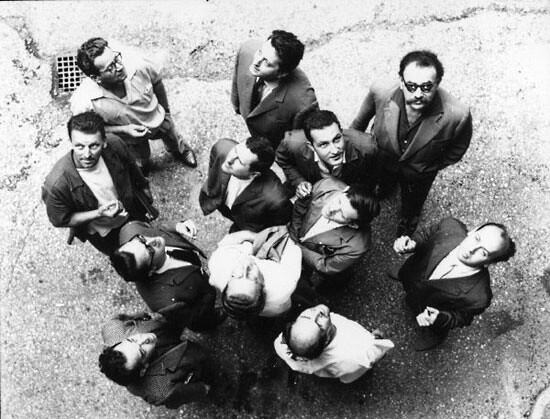

CH: On the contrary, they assumed all art practices were aesthetic, which is very different.
BG: Indeed, such putting forward of the theoretical and interpretive gesture as artistic work is what fundamentally connects Art & Language’s practice with many others in Russia at that time. We are living in a time where differences and identities are very much stressed. If you look at exhibitions, it is always this and that identity, and, on the other hand there’s always the repetitive stating of differences between different identities. I was very much criticized for comparing Stalinist culture with the avant-garde, and since then the problem has not disappeared. We are living in a very strange time which owes a lot to the market, the system of intellectual property, the rights to branding, and so on. The tendency to overlook and exclude similarities is deeply ingrained in our cultural consciousness because it is actually what our consciousness is based on. However, I think it would not be a wrong or false intellectual adventure to attempt to resist this almost natural urge to seek similarities beyond a seemingly very reasonable, legitimate, and understandable claim of exclusivity.


EČ: I think that Eastern art or the communist period is by default perceived as different. What we lack is a better theory of how the system functioned, to demonstrate the similarities with the present time, late capitalism.
BG: We can do that, but only if we want to. It’s very dangerous to look at the differences in our time. They immediately put you in a box and you’ll never come out of it, even if you love it. In the end they can be very distressing and frustrating.
CH: The problem with looking for similarities is that everything can be similar to everything else under an appropriate description.
ZB: Under a certain perspective, I hate the term “identity” more and more. The term “Eastern European” in our title implies an identity. The question of similarity is really interesting and challenging. I actually had the idea to change the term “identity” to the term “diversity.” Even if everything is similar, you’ll still have diversity among the similarity. Methodologically, it would be important to define how we tackle this question: The term “Conceptual art,” which is kind of universal whether we like it or not, is about sameness in the end, isn’t it?
CH: A boring logical point: unless your definition of similarity is sufficiently stringent, your identification of significant differences is meaningless.
BG: We can look at it theologically. Looking for similarities, as it was done in the Middle Ages, is theological. I’ll attempt to revive the Middle Ages with the same moves, as if reflecting on the divine, but in this case, it is reflection on the artistic. Difference, diversity, identity—these latter terms are only contemporary versions or pseudonyms of modernist authenticity. The theological perspective of the Middle Ages offers the possibility of transcending that, reflecting on it, and ultimately renouncing it. For me, seeking similarities is in itself a conceptual move, one which removes us from these naturalistic attitudes and directs us towards a more general reflection and capacity to renounce our own ingrained cultural context. At least I experienced this in the 1960s and 1970s, because it was where we started from. Other people did as well. Why should we react negatively to this gesture and go back to this naturalistic or pseudo-naturalistic discourse of identities, cultural context, and determination? It’s very reactionary.
CH: When you talk of modernist authenticity, do you feel that there is a specific version of authenticity that is modernist, or are you conflating the two terms: “modernism” and “authenticity”? That’s to say, is there a kind of authenticity claim which is not modernist?
BG: No, I don’t think so. But I think there are some parallels and similarities. There is the romantic authenticity, for example.
CH: That’s my point. There have always been claims to authenticity.
BG: I don’t think I’m conflating the two terms. It really starts with a kind of naturalism of a certain kind of Enlightenment. It starts with Kant.
CH: Giorgio Vasari?
BG: Vasari is much more formalistic. The idea that one can be a genius, and that nature is working through the artist, producing something in a spectacular and unconscious manner, starts in the late eighteenth century and continues today. Now it has different names, like “cultural context,” “identity,” “difference,” and “diversity,” but it’s the same Kantian idea of nature or culture, which has to do with race or nationality working in and through you. On the other hand, there is a different logical approach, much more mathematical and linguistic, which states that these things are only functions of language and cultural conventions, thus generally accessible, and have no mystery. If so, then we can speak about it in a manner that doesn’t require this rhetoric of uniqueness, authenticity, identity, and so on. I would prefer it. The other kind of language, directly or indirectly, suggests some kind of naturalism and I don’t like it. I believe it’s not Conceptual art.
CH: What are the practical consequences of your suggestion?
BG: The consequences would be not speaking of certain artistic practices in the East and West is if they were more than they are. This means disregarding or suppressing the tendency to root them in something mysterious like, for example, Eastern European identity or Russian identity or even British identity.
CH: But on what basis do you then decide which practices to look at and which not? Or do you just look at everything?
BG: No, we are finite human beings so we can’t look at everything. We just look at what we are interested in, I would say. We are a small group of people, interested in more or less the same phenomena. We cannot encompass the whole world, unfortunately, so the restriction is our objective capability. Given that we are reasonable human beings, finite in our abilities, we can just decide what is relevant.
ZB: I think we’ve all agreed on the term “Conceptual art,” which is nevertheless problematic. My impression was that we can use the term, regardless of what we’re going to do with it. Is that agreed?
VH: We should define it as a kind of shelter for different practices.
CH: The problem is, although we need it as a shelter, if it means absolutely anything, that won’t do either.
ZB: To avoid this—a thousand things under the same umbrella term—we should have some points and agree on a basic definition. I think we’ve agreed at least about the deconstruction of modernism. Next, we’ve discussed the question of subversion, which I would put in dialogue with institutional critique in the West. The critique of ideology or the question of the subversiveness of Conceptual art would be something that could be analogous to institutional critique.
VH: I think these subjective systems are also interesting: in Polish, for instance, there is the term “system of subjective objectivity.” There wasn’t a general movement, only fragmented subjective critiques, a plural of subjective positions, like we are considering here.
CH: It seems to me that we’ve hit a potential problem. If we identify Conceptual art as a critique of authenticist subjectivism, then we’ve opened it to the dangerous territory where it can mean anything. I, on the other hand, understand Conceptual art as involving a kind of critique of subjectivity, crucially one which is partly based on the sense that art is language-dependant, therefore there is no authenticity in the idea of a pre-linguistic subjective expression.
ZB: However, it’s crucial to start out with some points beyond any doubt which really describe Conceptual art. If we can aim at three or four, other questions and problems can come later. In general, since we have a universal term—“Conceptual art”—I think we have to have some generally valid definitions, even if only few. Deconstruction of modernism is valid in the West, in Latin America, and in Eastern Europe. And the critique of institutions can also be the critique of institution-ideology-systems, something political.
PP: This is also the critique of painting, the picture. I believe it was crucial for the Conceptual art experience in Central Europe that painting as such—the oil and the easel—was perceived as something to be critical of, because it was connected with the culture of the establishment. As such, the critique of institutions is not only the critique of real institutions, like museums and galleries within a system—in some countries, as in Hungary, there were no independent galleries at all. This of course meant that the easel painting was a symbol of this system. In this sense, it is also important, I think.
CH: As I understand it, the easel painting becomes partly a symbol of a certain kind of ownership of experience, as it were, a certain kind of privacy. So in a way, the critique of easel painting is really the critique of the authentic beholder.
ZB: I think the deconstruction of modernism could also be about the easel painting and all these issues.
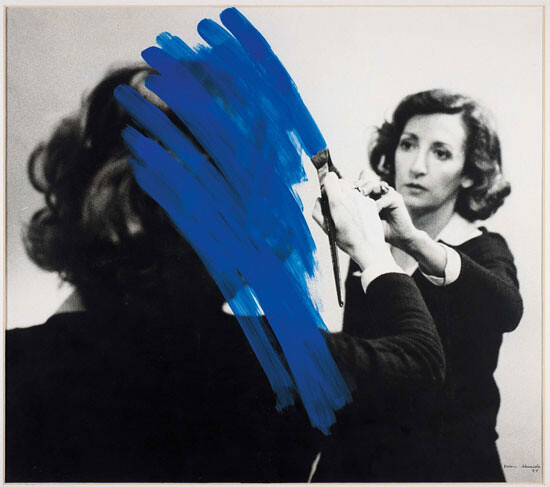

CH: I seems to me Piotr is introducing a slight difference. Modernism is not always and everywhere identified with the beholder. The beholder is the paradigm spectator of the painting. It is a point which I associate specifically with Conceptual art, the critique of the beholder, the critique of the observer. It may be implied by the deconstruction of modernism, but it’s not quite the same. Modernism means so many different things.
VH: We should perhaps define this modernism more precisely. Not modernism as such, but as the more object-based, formal modernist movement. This kind of deconstruction didn’t define Conceptual art in relation to modernism itself, because deconstruction is in modernist history. It should be more precisely the deconstruction of object-based or formal modernistic movements.
PP: It is very hard to construct definitions, and I’m not sure we really need them. Modernism was recognized as something opposing socialist realism. When it appeared in the beginning of the 1960s in Poland, let’s say—but also in Czechoslovakia at the end of the 1950s—modernism was perceived as the opposite of socialist realism. It was connected, of course, with easel painting, abstract painting, and so on. The next wave of artists in some countries, like Czechoslovakia, Poland, or later Romania, kept the modernist value system even when they began to critique some of the elements of modernism, such as easel painting.
ZB: If we consider the deconstruction of modernism a topic, we can present these issues and their complexity through the exhibition, and problematize them.When I started to think about the possible comparisons, I found that this could be a productive approach.
PP: Lets take, for example, the relationship between modernist painting, on the one hand, and conceptual activities, on the other. The painting More (The Sea) by Koller in Czechoslovakia contains text which gives it a multi-dimensional meaning. This shows the relationship between the easel painting as done by the modernists and other conceptual activities. Were you thinking of something like this?
ZB: Yes, although Art & Language is perhaps the most typical example of the kind of deconstruction of modernism through the artwork itself.
BS: Is it easier to frame it as the dematerialization of the art object, instead of the deconstruction of modernism? In our countries it’s not only modernism but all variety of art, of figurative art, and so on.
ZB: For me, modernism means artwork which is based on the question of media, as opposed to Conceptual art, which deconstructed this. And another issue, which Boris mentioned, was its reaction to the kind of modernism which he framed as artists’ ideas of utopia. To this point, modernist Yugoslavian abstract painters, for example, behaved as though they were dealing with universal truths through the medium and didn’t care about the concrete context. In terms of artwork, I think the question of media, for me at least, is very important. But maybe its not necessary to define it just yet.
VH: We should take into consideration that it’s not deconstruction, nor a negative or positive relation, but a kind of burden of different feelings, sometimes even lyrical feelings, towards modernism. A complicated relationship, although very basic for conceptualism in the beginning.
CF: I like to think in terms of strategies that artists were using in their operations to get in touch with the ideas of object or process. For instance, we talked about the political context and how information circulated. In fact, how were ideas and proposals communicated to other artists and how did this generate a kind of energy that could flow beyond these statements? The term implies media and multimedia, ways of doing things—dematerialization is a very charged idea within the history of Conceptual art and a certain moment of this recent history. Mail art was one such strategy; its history is specific to its moment. Mail art today doesn’t really mean anything.
CH: This raises two points. A crucial one is the collapse of the frontiers between art and theory. The other is not dematerialization, but the critique of the unique object. So instead of art being defined in terms of the uniqueness of a signed, handmade object, you get artists who start thinking more in terms of the way a literary or musical work might be defined. For instance: What is the authentic form of a symphony? Is it the single performance, the score, and so on? Those questions get injected into the practice of art. So the whole idea that your concept of art resides in the one object in front of you—that’s gone.
PP: I want to define dematerialization. It’s an important factor, particularly for Eastern European art practice. Given that there was very little communication at that time, dematerialization helped to avoid many institutional traps set by the system. Dematerialization meant not only a critique of the object; it also made communication much easier. Artists were allowed to exchange art production because it was just a piece of paper or an idea written down. It allowed them to exhibit very temporary exhibitions in private studios. So dematerialization, in my opinion, has a political dimension too, particularly in these terms and on an international level. We spoke last night of The Net, the manifesto made by Kozłowski and Kostolowski. The main motivation behind The Net was just to exchange ideas between artists, not from the West and the East, but among Eastern European countries. And it worked as such, because it was easy to send things from, say, Poznan to Budapest, from Kozłowski to Beke, to Tót, to Lakner, or Štembera. So dematerialization meant something like this too, particularly in Eastern Europe.
CF: I agree. At that time dematerialization was a kind of departure towards exchanging things, but things themselves did not dematerialize at all. That’s why we can look at this history, it’s here. This term applied in the 1970s, but it doesn’t apply today. We have all the photos, books, and so on. These were, in fact, materialized.


PP: I remember On Kawara writing on telegrams “I’m still alive” and sending them all over the world. Dematerialization was very welcomed by the artists, because it made communication easier. It was important because communists wanted to silence communication, to control it, particularly international communication. So if it was easier to transport, it worked better. Having these pieces in an accesible substance, dematerialized, made them easier to smuggle across borders. Because of this, I would keep dematerialization a key factor in order to define Conceptual art in Eastern Europe.
I remember at the end of the 1960s and the beginning of the 1970s, dematerialization was very welcome. It was really something important for those artists in order to communicate with each other.
CH: One point about it was that it was such a graspable concept. It’s significant that the essay “The Dematerialization of Art” was published in February 1968 in Art International, and the idea spread like wildfire. What I don’t like about it is that it licenses the idea of art as a kind of avant-gardism, which, it seems to me, was a red herring in Conceptual art, whereas what was important was a move away, not from the idea of objects or materials as such, but the investment in the orthographic—the technical term is “the allographic”—towards those forms of art not invested in the single authentic touch, such as writing, music and so on. Art was moving in that direction, which to me is not dematerialization, but something slightly different. That’s why I don’t like the notion of dematerialization, but it was a very powerful at the time.
CF: It was the emphasis on communication.
BG: I also dislike the term “dematerialization” for a very clear philosophical reason: all these texts and discussions are about language, and language is material. If you look at the philosophy of the 1960s and the 1970s, the most powerful idea of linguistics from de Saussure to Derrida, if we take the continental ones, or Wittgenstein, if we consider the Anglo-Saxon tradition, is the materiality of language itself, of the linguistic sign. Language is material. I would even argue that it is precisely this recognition of the materiality of language that made way for artists to use it as material for their practice. At least my friends used language, for the first time, as they understood that language is also an object, that it is material.
PP: In that sense, yes, but I’m talking about something different. Dematerialization in the sense of avoiding the object as such. I remember, for instance, some communication strategies of Robert Rehfeldt from the German Democratic Republic. These were only possible because he used postcards, papers, and organized an exhibition in Warsaw in the 1970s, exclusively with these materials.
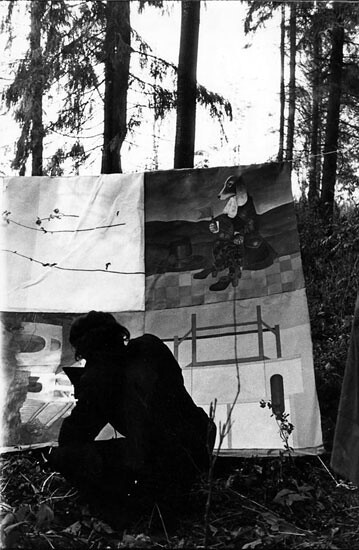

CH: What’s complicated here, and the reason we need a term like “revision” instead of “deconstruction,” is the reaction, at least in the West, against a very specific Americanized concept of modernism and autonomy, specifically associated with Clement Greenberg but also his influence, a particular reading of Clement Greenberg and the art he supported. You get other writers and artists looking back at the bits of modernist history that an Americanized version of modernism and autonomy tended to exclude, like Surrealism, Dada, Constructivism, and so forth. They’re brought back into the modernist church, and when that happens Duchamp is put back in place again, as is Malevich, Dada, and so on. The central notion of painting and sculpture tends to collapse anyway, because it turns out it wasn’t so central in the first place. Another factor we haven’t talked about, which seems crucial, is how the form of modernist theory is predicated very powerfully on the necessity of abstract art. Abstract art is absolutely central to that autonomized sense of modernism. What happens in the late 1950s and early 1960s is that abstract art runs out of steam. It turns out it is not going to go on forever. If everybody’s painting a black canvas, where can abstraction go from there? You don’t have to deconstruct or critique it. It’s just giving way underneath it. The mainstream stops developing there. It happened for different reasons in different places.
BG: The American construction of modernism is so narrow that it just dissolves itself. One doesn’t need to deconstruct it at all.
Category
Subject
To be continued in Conceptual Art and Eastern Europe, Part III


